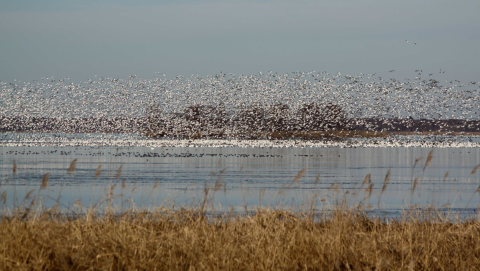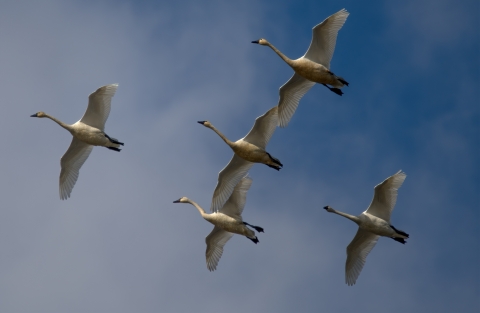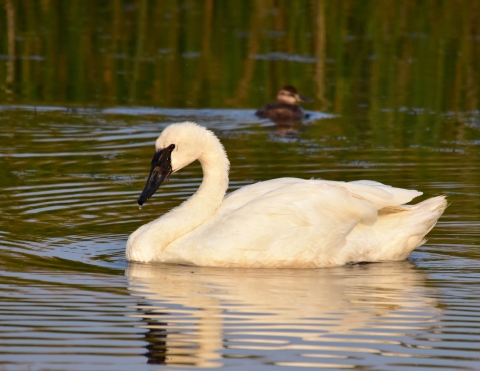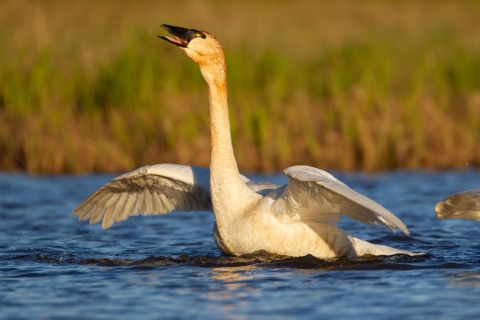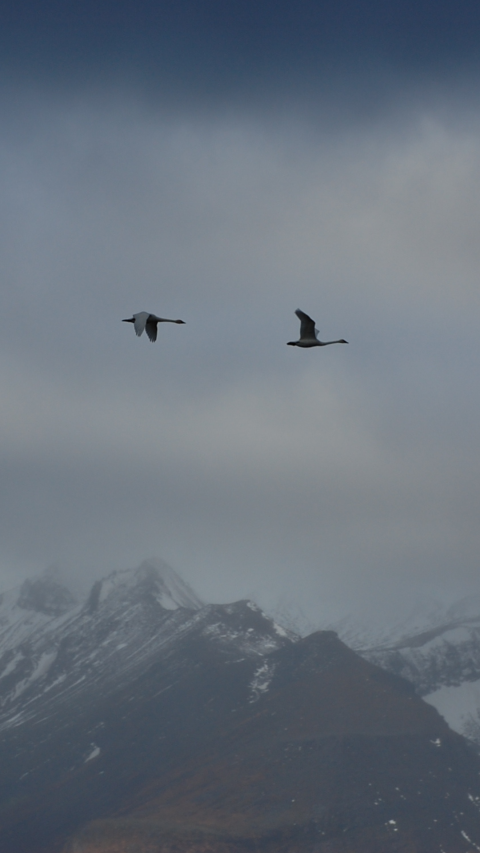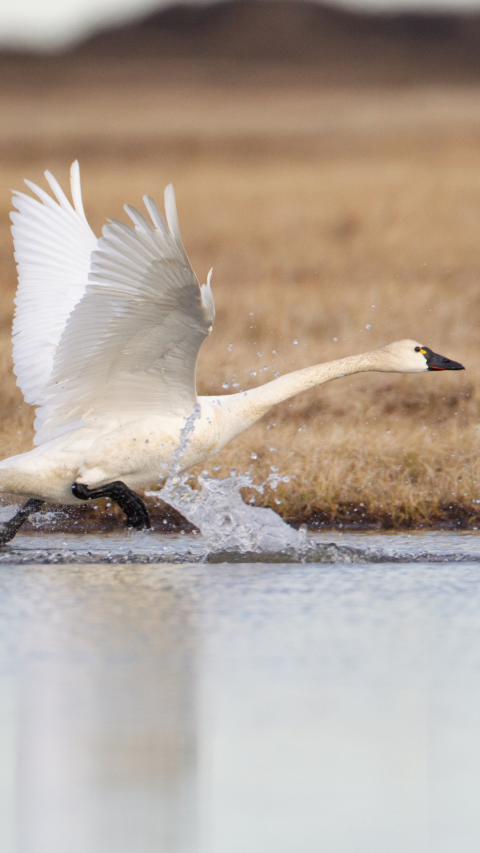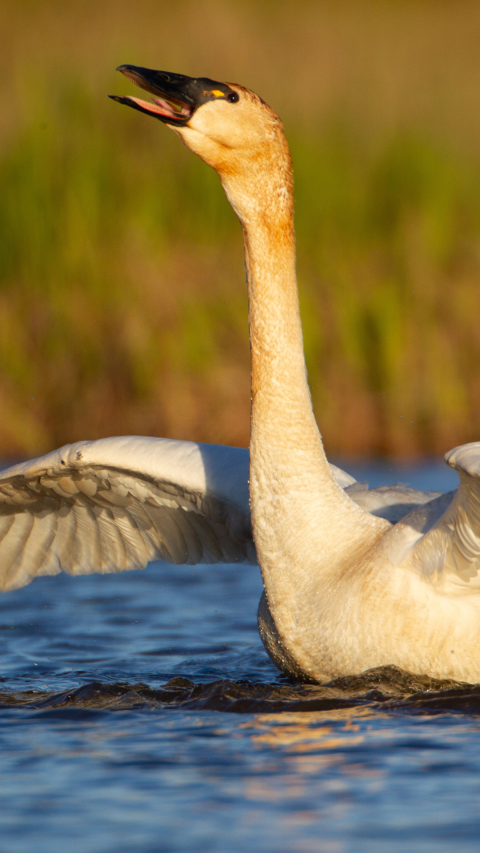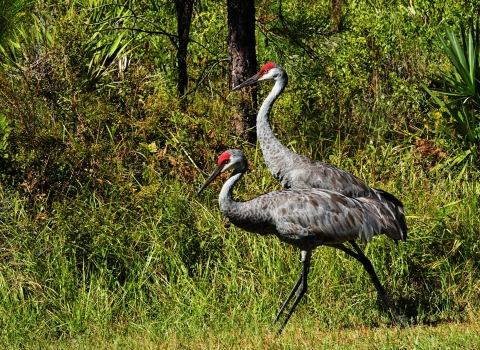Tundra swans spend almost a year together before mating -- and once they mate, it’s for life. During breeding season, the pairs spend their time alone in the Arctic Tundra. They nest together year-round.
Their “love” extends to their greater family. Both parents build nests and tend to their young. Tundra swans fiercely protect their nests and can fight off large animals like wolves.
If they had a theme song, it would be, “We are family, I got all my tundras with me.”
They migrate within family groups, traveling in a ‘V’ formation for about 4,000 miles from the Arctic to the lower states, including the Southeast wetlands and coastlines. You can see them on large inland lakes too.
Seeing hundreds of tundra swans gathered is a winter delight. If you are looking for an amazing experience this winter, visit one of our National Wildlife Refuges and experience this delight firsthand, through around the end of February.
Here are some recommendations on where to see tundra swans:
- Pea Island National Wildlife Refuge, North Carolina: Established in 1938 on an Outer Banks barrier island to provide nesting, resting, and wintering habitat for migratory birds,
- Lake Mattamuskeet National Wildlife Refuge, North Carolina: Featuring the largest natural freshwater lake in North Carolina, the refuge supports large numbers of wintering waterfowl,
- Pocosin Lakes National Wildlife Refuge, North Carolina: Conserves a rare type of wetland habitat, known as "pocosin.” More than 100,000 ducks, geese, and swans congregate on the refuge in winter.
- Alligator River National Wildlife Refuge, North Carolina: Established in 1984 to protect the rare pocosin wetlands and their wildlife.
If none of the above are located near you, you can find a different National Wildlife Refuge using our tundra swan species map!
Tundra Swan Photo Contest
As part of our Bird of the Month series, we invite you to submit your photos of tundra swans in a photo contest.
In the file name of your photo, please include your first and last name, contact email address, and the location where the photo was taken. Submissions will be judged by a panel of U.S. Fish and Wildlife Service employees. Once a winner is selected, they will be contacted via email and asked to sign a photo release form. This form protects the photographer's rights, ensures proper credits are given, and grants the U.S. Fish and Wildlife Service permission to share the photo on our social media channels.
The winner will be announced publicly near the end of each month on our Southeast Regional Facebook and X (formerly known as Twitter) platforms.
A photo contest will occur each month for each featured bird species. At the end of 2024, all twelve winning photographs will be shared on our regional social media accounts.
Submit your original photos of tundra swans here!
Tundra Swan Identification
Tundra swans are often misidentified as trumpeter swans. Both have entirely white plumage with black beaks and feet. However, tundra swans are smaller, and they have a yellow spot on the base of their beaks.
Trumpeter swans have a loud call that sounds similar to a trumpet and tundra swans have a high pitched “oo-OO-oo" call.
Tundra Swan Phone Wallpapers
Need more sandhill cranes in your life? Never fear, phone wallpapers are here! Download your favorite, set your screen, and admire away!
Five Tundra Swan Fast Facts:
- Because the tundra swans are such strong swimmers, they can take off from the water with a running start.
- They can fly as high up as 9,000 feet and as fast as 50 miles per hour.
- In winter they sleep almost exclusively on water.
- Air whistling through tundra swans’ wings as they fly can be heard from about 100 feet above.
- Juvenile tundra swans are called cygnets.
Want to learn more about the tundra swan biology? Check out their U.S. Fish and Wildlife Service species profile to learn about their habitat, diet, range, and more!


